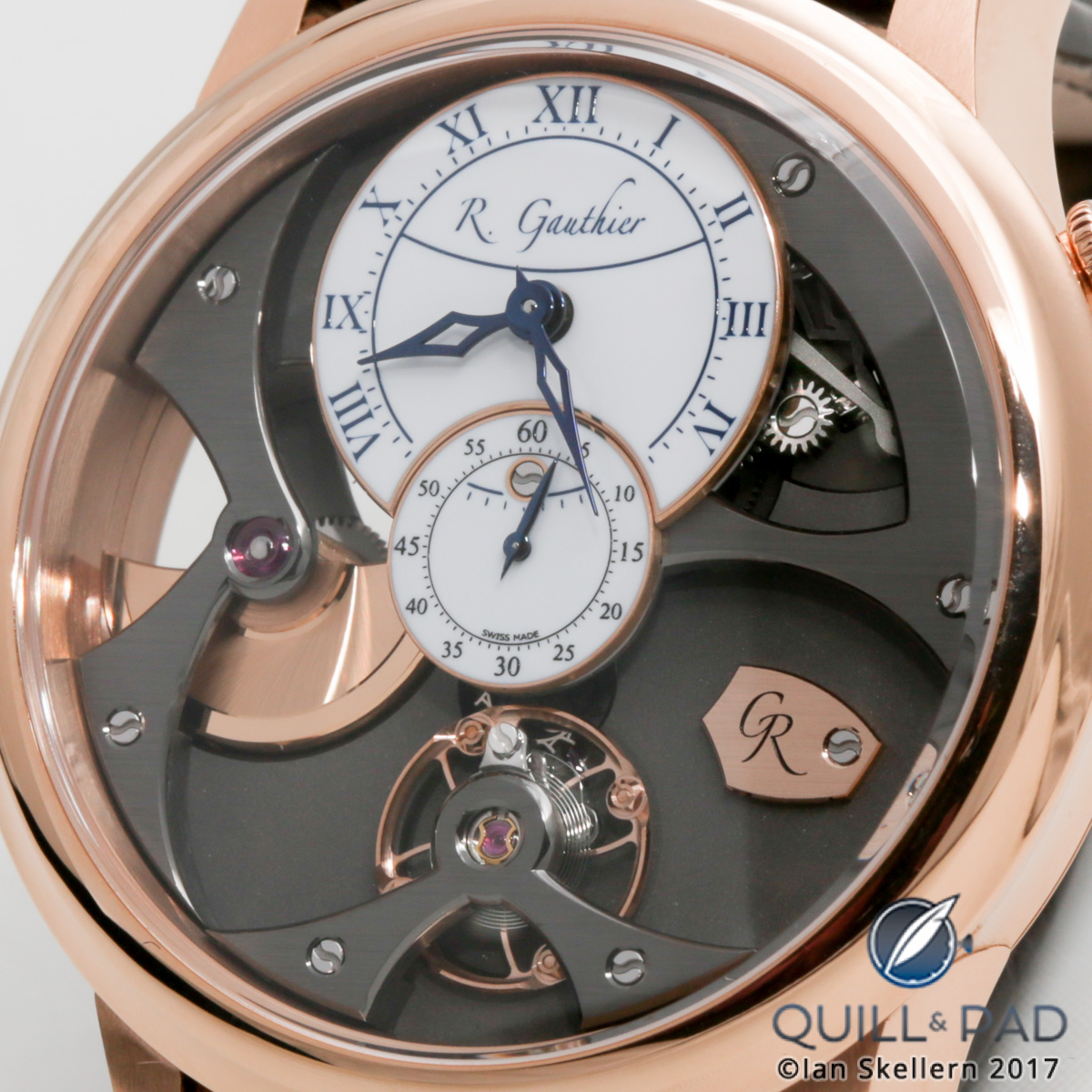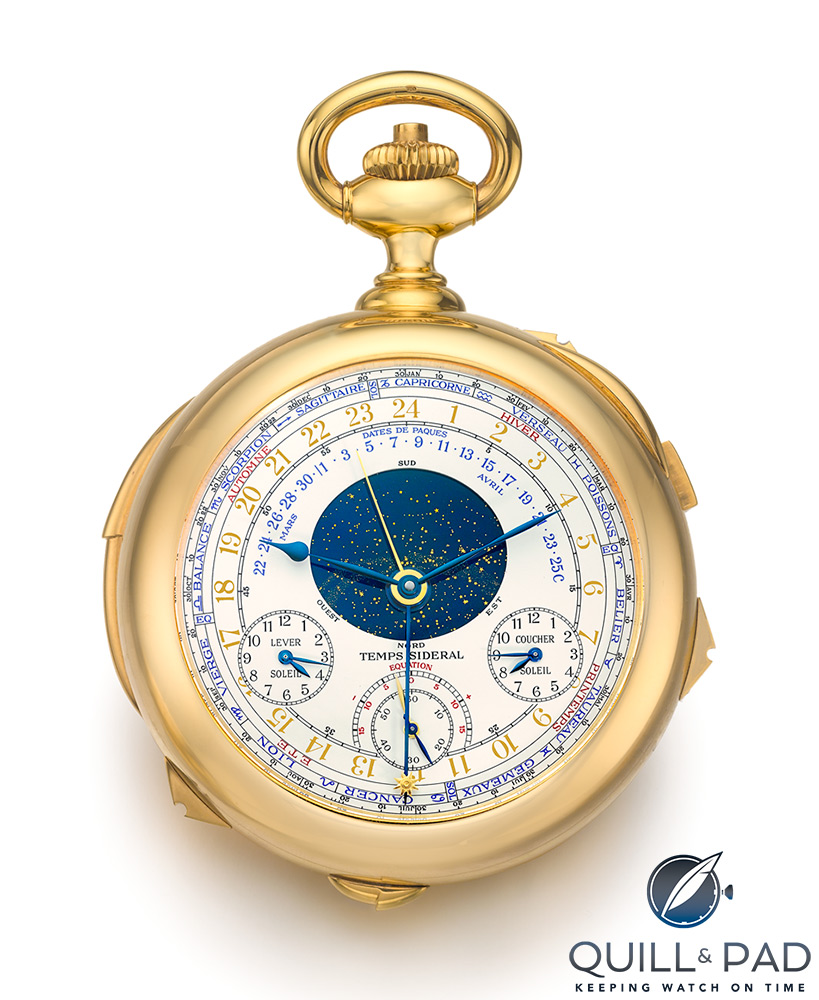
I first handled this watch back in 2009 when Antiquorum sold the yellow gold Caliber 89 during its fall auction on November 15 for 5,120,000 Swiss francs including buyer’s fee.
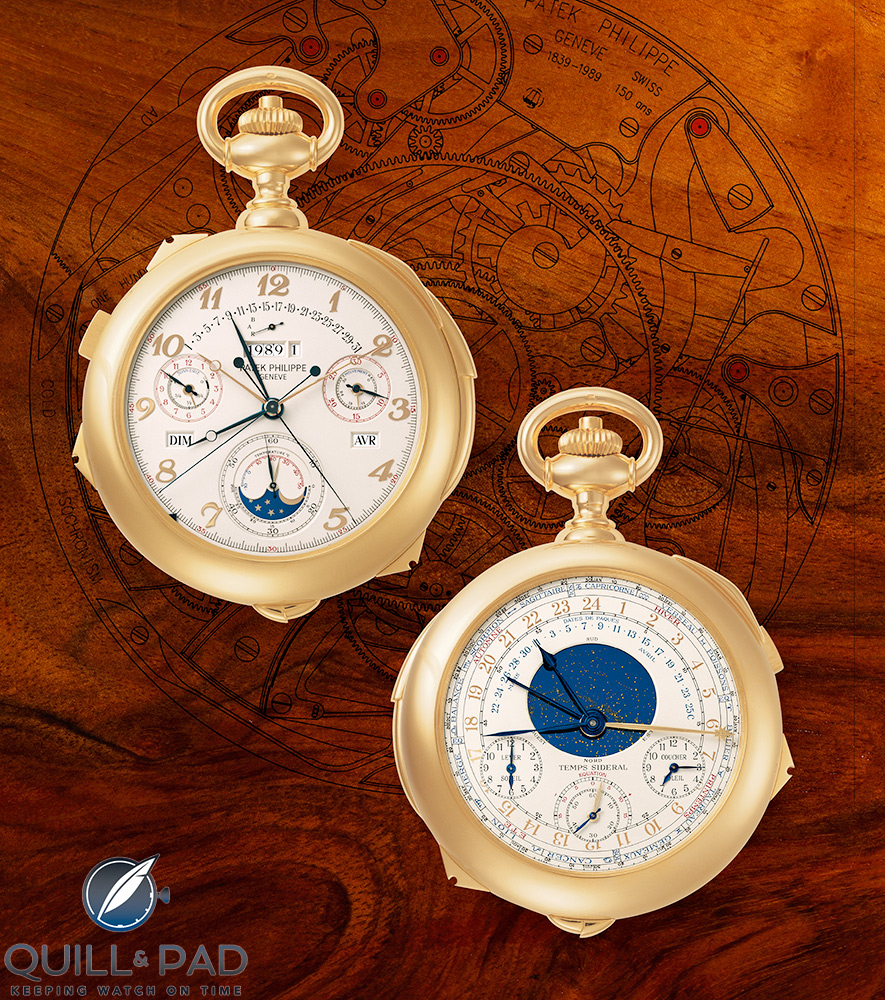
Patek Philippe Caliber 89 in yellow gold (photo courtesy Antiquorum)
The watch, which is more the size of a carriage clock, had come from Japanese Patek Philippe and Ferrari collector Yoshiho Matsuda’s collection. It weighs an impressive 1.1 kilograms!
This Caliber 89, one of the rarest and costliest pocket watches in the world, is undoubtedly the same one I handled because to public knowledge, only one was made in each of four precious metals – meaning there is only one yellow gold example.
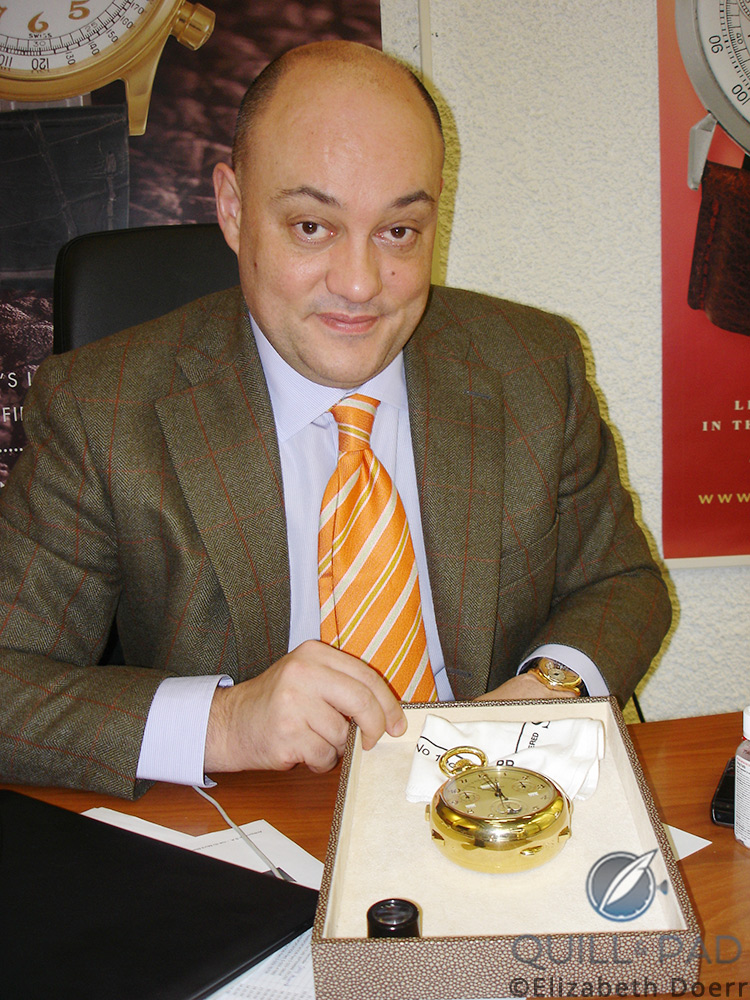
Then Antiquorum COO William Rohr in 2009 with the yellow gold Patek Philippe Caliber 89
From its launch in 1989 until the advent of Vacheron Constantin Reference 57260 in 2015 (see Vacheron Constantin’s Reference 57260 Is The Most Complicated Portable Watch In The World), Patek Philippe’s Caliber 89 held the record for being the most complicated timepiece in existence. It still remains Patek Philippe’s most complicated timepiece ever.
Its triple spring barrel movement with non-visible tourbillon boasts 33 complications and displays the hours, minutes, and seconds of both mean time (front) and sidereal time (back).
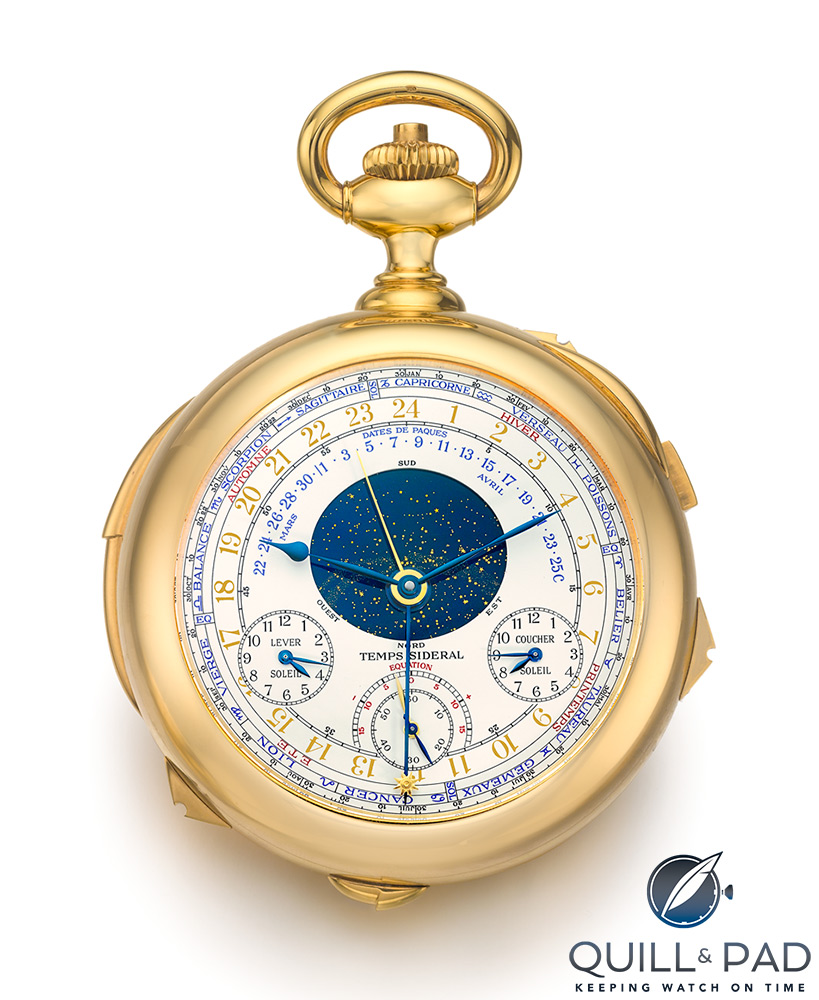
Patek Philippe Caliber 89 in yellow gold (photo courtesy Sotheby’s)
Other complications include: second time zone, times of sunrise and sunset, the equation of time, world time for 125 cities, secular perpetual calendar (day, weekday, month, four-digit year, leap year, “sun hand” for display of the season, equinox, solstice, and zodiac, star chart, age and phase of the moon, date of Easter, Sirius’s passage, the moon’s passage, lunar orbit, and a 24-hour display with day/night indicator), split-seconds chronograph with 30-minute and 12-hour counters, grande et petite sonnerie with carillon, a minute repeater, alarm, power reserve indicators for both movement and strike train, crown position indicator, thermometer, hair hygrometer, barometer, altimeter, and compass.
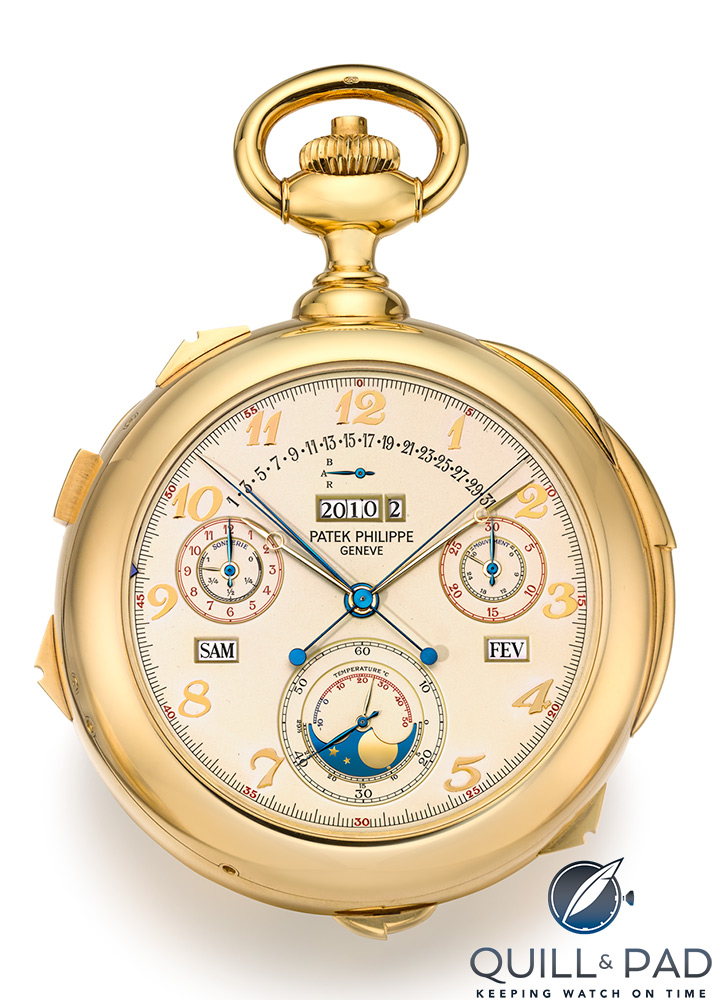
Patek Philippe Caliber 89 in yellow gold (photo courtesy Sotheby’s)
The movement containing 1,278 components boasts four levels on three German silver main plates and 126 jewels. It measures 71.5 x 28.05 mm and weighs 600 grams.
Taking a full nine years to complete, Caliber 89’s movement conforms to the strict specifications of the Seal of Geneva (see Point Of Reference: The Standards Of The Geneva Seal).
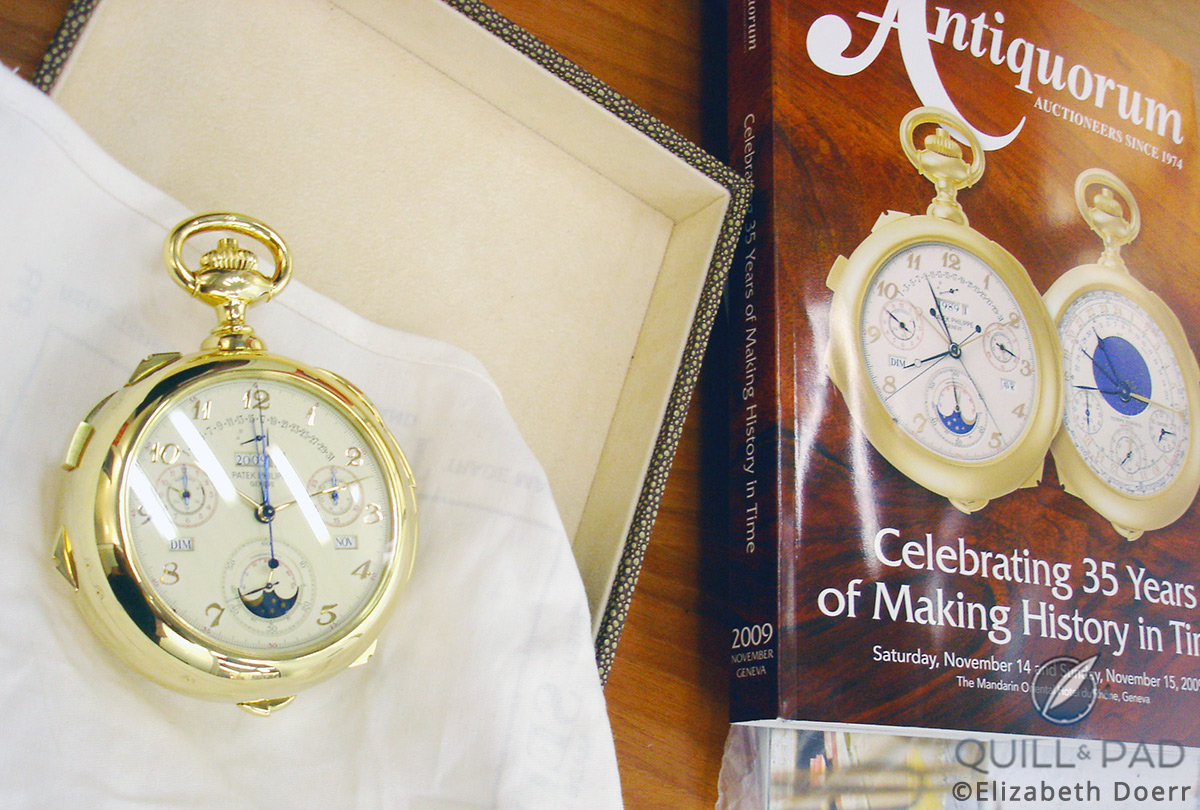
The yellow Patek Philippe Caliber 89 in 2009 at Antiquorum’s head office in Geneva
The yellow gold example was originally part of Antiquorum’s themed sale “The Art of Patek Philippe,” which took place on April 9, 1989 to celebrate the 150th anniversary of the Geneva manufacture. All four of the watches were sold at this time to one royal family, with the collection scattering in the early years of the new millennium.
The Patek Philippe Museum in Geneva does not own an example of Caliber 89: the watch measuring 88.2 mm on display there does not contain a movement.
Sotheby’s set the world record for any timepiece when it sold Patek Philippe’s Henry Graves Supercomplication for $24 million in 2014.
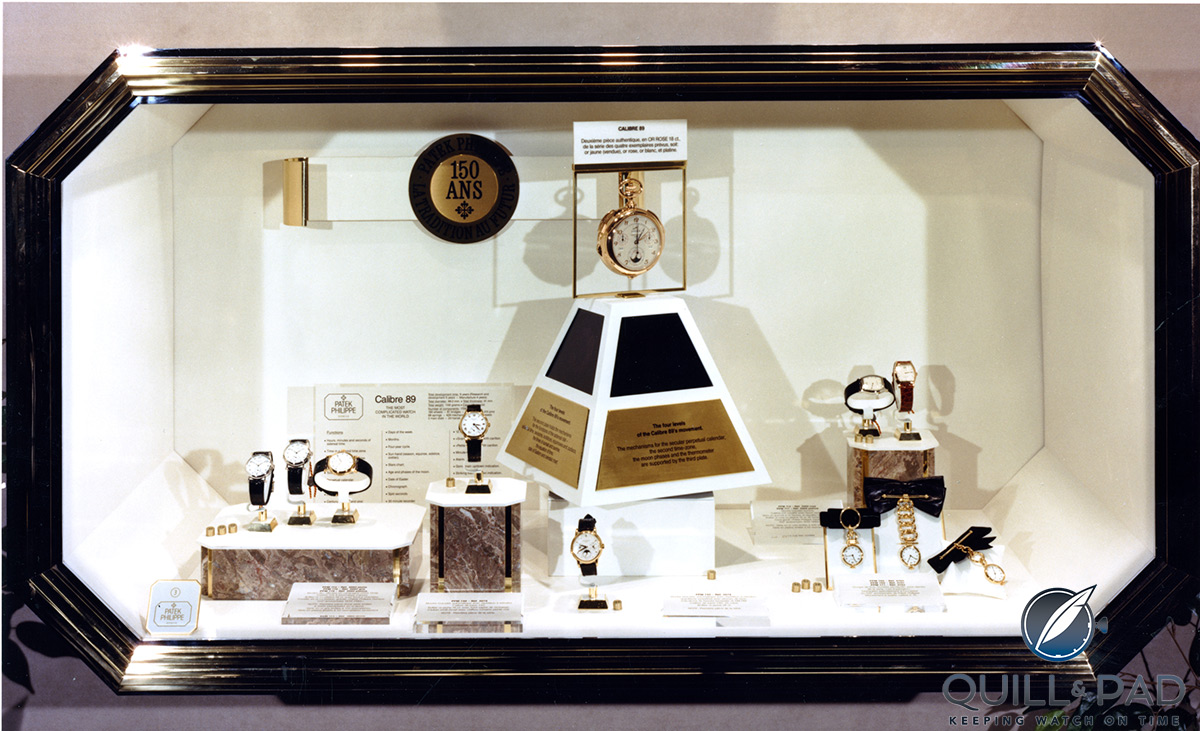
Patek Philippe Calibre 89 in the center of this display at Baselworld in 1990 commemorating the brand’s 150th anniversary
For more information, please visit www.patek.com/en/insider/commemorative-watches/past-important-commemorative-timepieces and/or www.sothebys.com/en/auctions/2017/important-watches.
Quick Facts Patek Philippe Caliber 89
Case: yellow gold, 88.2 x 41.7 mm
Movement: manually wound Caliber 89 with 1,728 components; one-minute tourbillon
Functions: hours, minutes, seconds (mean time on front, sidereal time on back; second time zone, times of sunrise and sunset, equation of time, world time for 125 cities, secular perpetual calendar (day, weekday, month, four-digit year, leap year, “sun hand” for display of the season, equinox, solstice, and zodiac, star chart, age and phase of the moon, date of Easter, Sirius’s passage, the moon’s passage, lunar orbit, and a 24-hour display with day/night indicator), split-seconds chronograph, grande et petite sonnerie with carillon, minute repeater, alarm, 2 power reserve indicators, crown position indicator, thermometer, hygrometer, barometer, altimeter, compass
Limitation: four pieces in total, one encased each in yellow gold, white gold, pink gold, and platinum
Estimated auction price: $6.4 – $9.9 million

